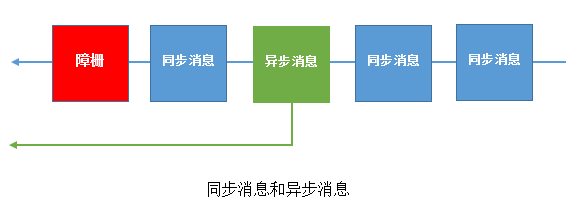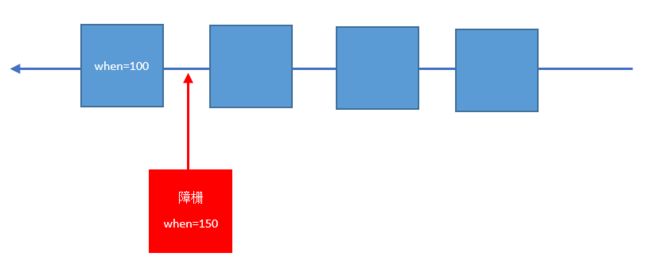Android Handler机制系列文章整体内容如下:
- Android Handler机制1之Thread
- Android Handler机制2之ThreadLocal
- Android Handler机制3之SystemClock类
- Android Handler机制4之Looper与Handler简介
- Android Handler机制5之Message简介与消息对象对象池
- Android Handler机制6之MessageQueue简介
- Android Handler机制7之消息发送
- Android Handler机制8之消息的取出与消息的其他操作
- Android Handler机制9之Handler的Native实现前奏之Linux IO多路复用
- Android Handler机制10之Handdler的Native实现Native的实现
- Android Handler机制11之Handler机制总结
- Android Handler机制12之Callable、Future和FutureTask
- Android Handler机制13之AsyncTask源码解析
本片文章的主要内容如下:
- 1、MessageQueue简介
- 2、MessageQueue类注释
- 3、MessageQueue成员变量
- 4、MessageQueue的构造函数
- 5、native层代码的初始化
- 6、IdleHandler简介
- 7、MessageQueue中的Message分类
MessageQueue官网
一、MessageQueue简介
MessageQueue即消息队列,这个消息队列和上篇文章里面的Android Handler机制5之Message简介与消息对象对象池里面的 消息对象池 可不是同一个东西。MessageQueue是一个消息队列,Handler将Message发送到消息队列中,消息队列会按照一定的规则取出要执行的Message。需要注意的是Java层的MessageQueue负责处理Java的消息,native也有一个MessageQueue负责处理native的消息,本文重点是Java层,所以暂时不分析native源码。
二、MessageQueue类注释
MessageQueue.java源码地址
Low-level class holding the list of messages to be dispatched by a Looper. Messages are not added directly to a MessageQueue, but rather through Handler objects associated with the Looper.
You can retrieve the MessageQueue for the current thread with Looper.myQueue().
翻译一下:
它是一个被Looper分发、低等级的持有Message集合的类。Message并不是直接加到MessageQueue的,而是通过Handler对象和Looper关联到一起。
我们可以通过Looper.myQueue()方法来检索当前线程的MessageQueue
它是一个低等级的持有Messages集合的类,被Looper分发。Messages并不是直接加到MessageQueue的,而是通过Handler对象和Looper关联到一起。我们可以通过Looper.myQueue()方法来检索当前线程的
三、MessageQueue成员变量
// True if the message queue can be quit.
//用于标示消息队列是否可以被关闭,主线程的消息队列不可关闭
private final boolean mQuitAllowed;
@SuppressWarnings("unused")
// 该变量用于保存native代码中的MessageQueue的指针
private long mPtr; // used by native code
//在MessageQueue中,所有的Message是以链表的形式组织在一起的,该变量保存了链表的第一个元素,也可以说它就是链表的本身
Message mMessages;
//当Handler线程处于空闲状态的时候(MessageQueue没有其他Message时),可以利用它来处理一些事物,该变量就是用于保存这些空闲时候要处理的事务
private final ArrayList mIdleHandlers = new ArrayList();
// 注册FileDescriptor以及感兴趣的Events,例如文件输入、输出和错误,设置回调函数,最后
// 调用nativeSetFileDescriptorEvent注册到C++层中,
// 当产生相应事件时,由C++层调用Java的DispathEvents,激活相应的回调函数
private SparseArray mFileDescriptorRecords;
// 用于保存将要被执行的IdleHandler
private IdleHandler[] mPendingIdleHandlers;
//标示MessageQueue是否正在关闭。
private boolean mQuitting;
// Indicates whether next() is blocked waiting in pollOnce() with a non-zero timeout.
// 标示 MessageQueue是否阻塞
private boolean mBlocked;
// The next barrier token.
// Barriers are indicated by messages with a null target whose arg1 field carries the token.
// 在MessageQueue里面有一个概念叫做障栅,它用于拦截同步的Message,阻止这些消息被执行,
// 只有异步Message才会放行。障栅本身也是一个Message,只是它的target为null并且arg1用于区分不同的障栅,
// 所以该变量就是用于不断累加生成不同的障栅。
private int mNextBarrierToken;
四、MessageQueue的构造函数
通过分析下图
我们知道MessageQueue就一个构造函数
代码在MessageQueue.java 68行
MessageQueue(boolean quitAllowed) {
mQuitAllowed = quitAllowed;
mPtr = nativeInit();
}
MessageQueue只是有一个构造函数,该构造函数是包内可见的,其内部就两行代码,分别是设置了MessageQueue是否可以退出和native层代码的相关初始化
五、native层代码的初始化
在MessageQueue的构造函数里面调用 nativeInit(),我们来看下
代码在MessageQueue.java 61行
private native static long nativeInit();
根据Android跨进程通信IPC之3——关于"JNI"的那些事中知道,nativeInit这个native方法对应的是android_os_MessageQueue.cpp里面的android_os_MessageQueue_nativeInit(JNIEnv* , jclass )函数
代码在android_os_MessageQueue.cpp 172 行
static jlong android_os_MessageQueue_nativeInit(JNIEnv* env, jclass clazz) {
// 初始化native消息队列
NativeMessageQueue* nativeMessageQueue = new NativeMessageQueue();
if (!nativeMessageQueue) {
jniThrowRuntimeException(env, "Unable to allocate native queue");
return 0;
}
nativeMessageQueue->incStrong(env);
return reinterpret_cast(nativeMessageQueue);
}
后面在讲解流程时候的会详细讲解,这里就不如深入了。
六、IdleHandler简介
作为Android开发者我们知道,Handler除了用于发送Message,其本身也承载着执行具体业务逻辑的责任handlerMessage(Message msg),而IdleHandler在处理业务逻辑方面和Handler一样,不过它只会在线程空闲的时候才执行业务逻辑的处理,这些业务经常是哪些不是很紧要或者不可预期的,比如GC。
(一) IdleHandler接口
代码在MessageQueue.java 777行
/**
* Callback interface for discovering when a thread is going to block
* waiting for more messages.
*/
public static interface IdleHandler {
/**
* Called when the message queue has run out of messages and will now
* wait for more. Return true to keep your idle handler active, false
* to have it removed. This may be called if there are still messages
* pending in the queue, but they are all scheduled to be dispatched
* after the current time.
*/
boolean queueIdle();
}
老规矩 先来翻译一下接口的注释:
回调的接口,当线程空闲的时候可以利用它来处理一些业务员
这个IdleHandler接口就一个抽象方法queueIdle,我也看一下抽象方法的注释
当消息队内所有的Message都执行完之后,该方法会被调用。该返回值为True的时候,IdleHandler会一直保持在消息队列中,False则会执行完该方法后移除IdleHandler。需要注意的是,当消息队列中还有其他Delay Message并且这些Message还没到被执行的时间的时候,由于线程是空闲的,所以IdleHandler也可能会被执行,
从源码可以看出IdleHandler其实就是一个简单的回调接口,内部就一个带返回值的方法boolean queueIdle(),在使用的时候只需要实现该接口并加入到MessageQueue中就可以了,例如
从源码可以看出IdleHandler其实就是一个简单的回调接口,内部就一个带返回值的方法boolean queueIdle(),在使用的时候只需要实现该接口并加入到MessageQueue中就可以了,例如下面简答的代码所示
MessageQueue messageQueue = Looper.myQueue();
messageQueue.addIdleHandler(new MessageQueue.IdleHandler() {
@Override
public boolean queueIdle() {
// do something.
return false;
}
});
(二) 添加IdleHandler:addIdleHandler(IdleHandler handler)
代码在MessageQueue.java 115行
/**
* Add a new {@link IdleHandler} to this message queue. This may be
* removed automatically for you by returning false from
* {@link IdleHandler#queueIdle IdleHandler.queueIdle()} when it is
* invoked, or explicitly removing it with {@link #removeIdleHandler}.
*
* This method is safe to call from any thread.
*
* @param handler The IdleHandler to be added.
*/
public void addIdleHandler(@NonNull IdleHandler handler) {
if (handler == null) {
throw new NullPointerException("Can't add a null IdleHandler");
}
synchronized (this) {
mIdleHandlers.add(handler);
}
}
看先注释:
- 添加一个新的IdleHanlder到消息队列中,当IdleHandler的回调方法返回False的时候,该IdleHanlder在被执行后会被立即移除,你也可以通过调用removeIdleHandler(IdleHandler handler)方法来移除指定的IdleHandler。
- 在任何线程中调用该方法都是安全的。
方法内部很简单,就是三步
- 第一步,做非空判断
- 第二步,加一个同步锁
- 第三步,调用mIdleHandlers.add(handler);添加 (PS:mIdleHandlers是一个ArrayList)
(四) 删除IdleHandler:removeIdleHandler(IdleHandler handler)
代码在MessageQueue.java
133行
/**
* Remove an {@link IdleHandler} from the queue that was previously added
* with {@link #addIdleHandler}. If the given object is not currently
* in the idle list, nothing is done.
*
* This method is safe to call from any thread.
*
* @param handler The IdleHandler to be removed.
*/
public void removeIdleHandler(@NonNull IdleHandler handler) {
synchronized (this) {
mIdleHandlers.remove(handler);
}
}
看先注释:
- 从消息队列中移除一个之前添加的IdleHandler。如果该IdleHandler不存在,则什么也不做。
移除IdleHandler的方法同样很简单,下一步同步处理然后直接mIdleHandlers.reomve(handler)就可以了。
七、MessageQueue中的Message分类
在MessageQueue中,Message被分成3类,分别是
- 同步消息
- 异步消息
- 障栅
那我们就一次来看下:
(一) 同步消息:
正常情况下我们通过Handler发送的Message都属于同步消息,除非我们在发送的时候执行该消息是一个异步消息。同步消息会按顺序排列在队列中,除非指定Message的执行时间,否咋Message会按顺序执行。
(二) 异步消息:
想要往消息队列中发送异步消息,我们必须在初始化Handler的时候通过构造函数public Handler(boolean async)中指定Handler是异步的,这样Handler在讲Message加入消息队列的时候就会将Message设置为异步的。
(三) 障栅(Barrier):
障栅(Barrier) 是一种特殊的Message,它的target为null(只有障栅的target可以为null,如果我们自己视图设置Message的target为null的话会报异常),并且arg1属性被用作障栅的标识符来区别不同的障栅。障栅的作用是用于拦截队列中同步消息,放行异步消息。就好像交警一样,在道路拥挤的时候会决定哪些车辆可以先通过,这些可以通过的车辆就是异步消息。
1、添加障栅:postSyncBarrier()
代码在MessageQueue.java
458行
/**
* Posts a synchronization barrier to the Looper's message queue.
*
* Message processing occurs as usual until the message queue encounters the
* synchronization barrier that has been posted. When the barrier is encountered,
* later synchronous messages in the queue are stalled (prevented from being executed)
* until the barrier is released by calling {@link #removeSyncBarrier} and specifying
* the token that identifies the synchronization barrier.
*
* This method is used to immediately postpone execution of all subsequently posted
* synchronous messages until a condition is met that releases the barrier.
* Asynchronous messages (see {@link Message#isAsynchronous} are exempt from the barrier
* and continue to be processed as usual.
*
* This call must be always matched by a call to {@link #removeSyncBarrier} with
* the same token to ensure that the message queue resumes normal operation.
* Otherwise the application will probably hang!
*
* @return A token that uniquely identifies the barrier. This token must be
* passed to {@link #removeSyncBarrier} to release the barrier.
*
* @hide
*/
public int postSyncBarrier() {
return postSyncBarrier(SystemClock.uptimeMillis());
}
看先注释:
- 向Looper的消息队列中发送一个同步的障栅(barrier)
- 如果没有发送同步的障栅(barrier),消息处理像往常一样该怎么处理就怎么处理。当发现遇到障栅(barrier)后,队列中后续的同步消息会被阻塞,直到通过调用removeSyncBarrier()释放指定的障栅(barrier)。
- 这个方法会导致立即推迟所有后续发布的同步消息,知道满足释放指定的障栅(barrier)。而异步消息则不受障栅(barrier)的影响,并按照之前的流程继续处理。
- 必须使用相同的token去调用removeSyncBarrier(),来保证插入的障栅(barrier)和移除的是一个同一个,这样可以确保消息队列可以正常运行,否则应用程序可能会挂起。
- 返回值是障栅(barrier)的唯一标识符,持有个token去调用removeSyncBarrier()方法才能达到真正的释放障栅(barrier)
方法内部很简单就是调用了postSyncBarrier(SystemClock.uptimeMillis()),通过Android Handler机制3之SystemClock类,我们知道SystemClock.uptimeMillis()是手机开机到现在的时间。那我们来看下这个postSyncBarrier(long)方法
1.1、postSyncBarrier(long when)
在讲解之前先补充一个知识点:MessageQueue里面的所有Message是按照时间从前往后有序排列的。后面我们讲解Handler机制流程的时候会详细说明
代码在MessageQueue.java
462行
private int postSyncBarrier(long when) {
// Enqueue a new sync barrier token.
// We don't need to wake the queue because the purpose of a barrier is to stall it.
synchronized (this) {
/** 第一步 */
final int token = mNextBarrierToken++;
/** 第二步 */
final Message msg = Message.obtain();
msg.markInUse();
msg.when = when;
msg.arg1 = token;
/** 第三步 */
Message prev = null;
//把消息队列的第一个元素指向p
Message p = mMessages;
if (when != 0) {
/** 第四步 */
while (p != null && p.when <= when) {
//通过p的时间点和障栅的时间点的比较,如果比障栅的小,就把消息队列中的消息向后移动一位(因为消息队列中所有元素是按照时间排序的)
prev = p;
p = p.next;
}
}
/** 第五步 */
//prev != null 代表不是消息队列的头部,则需要考虑前面一个消息和后面的一个消息
if (prev != null) { // invariant: p == prev.next
//msg的下一个消息是p
msg.next = p;
//msg的上一个消息是msg
prev.next = msg;
} else {
//prev == null 代表是消息队列的头部,则只需要负责下一个消息即可
msg.next = p;
//设置自己是消息队列的头部
mMessages = msg;
}
/** 第六步 */
return token;
}
}
方法详解
- 第一步 获取障栅的唯一标示,然后自增该变量作为下一个障栅的标示,通过mNextBarrierToken ++,我们得知,这些唯一标示是从0开始,自加1的。
- 第二步 从Message消息对象池中获取一个Message,并重置它的when和arg1。并且arg1为token的值,通过msg.markInUse()标示msg正在被使用。这里并没有给tareget赋值。
- 第三步 创建变量pre和p为第四步做准备,其中p被赋值为mMessages,而mMessages未消息队列的第一个元素,所以p此时就是消息队列的第一个元素。
- 第四步 通过对 队列中的第一个Message的when和障栅的when作比较,决定障栅在整个消息队列中的位置,比如是放在队列的头部,还是队列中第二个位置,如果障栅在头部,则拦截后面所有的同步消息,如果在第二的位置,则会放过第一个,然后拦截剩下的消息,以此类推。
- 第五步 把msg插入到消息队列中
- 第六步 返回token
从源码中我们可以看出,在把障栅插入队列的时候先通过when的比较,根据不同的情况把障栅插入到不同的位置,具体情况如下图所示:
ps:蓝色的为Message、红色的为Barrier
当Message.when 当Message.when>=Barrier.when,也就是第一个Message的执行时间点在障栅之后。 代码在MessageQueue.java 删除障栅(barrier)的方法也很简单,就是不断地遍历消息队列(链表结构),直到倒找与指定的token相匹配的障栅,然后把它从队列中移除。
大家在看上面的代码的时候有没有注意到一个事情,就是msg这个对象的target是null,因为从始至终就没有赋值过,这也是后面在移除障栅的时候通过判断条件之一:是target是否为null来判断的
2、移除障栅
501行 /**
* Removes a synchronization barrier.
*
* @param token The synchronization barrier token that was returned by
* {@link #postSyncBarrier}.
*
* @throws IllegalStateException if the barrier was not found.
*
* @hide
*/
public void removeSyncBarrier(int token) {
// Remove a sync barrier token from the queue.
// If the queue is no longer stalled by a barrier then wake it.
synchronized (this) {
Message prev = null;
// 获取消息队列的第一个元素
Message p = mMessages;
//遍历消息队列的所有元素,直到p.targe==null并且 p.arg1==token才是我们想要的障栅
while (p != null && (p.target != null || p.arg1 != token)) {
prev = p;
p = p.next;
}
if (p == null) {
throw new IllegalStateException("The specified message queue synchronization "
+ " barrier token has not been posted or has already been removed.");
}
//是否需要唤醒
final boolean needWake;
//如果是障栅是不是第一个圆度
if (prev != null) {
//跳过障栅,将障栅的上一个元素的next指向障栅的next
prev.next = p.next;
//因为有元素,所以不需要唤醒
needWake = false;
} else {
//如果是第一个元素,则直接下消息队列中的第一个元素指向障栅的下一个即可
mMessages = p.next;
//如果消息队列中的第一个元素是null则说明消息队列中消息,所以需要唤醒
//
needWake = mMessages == null || mMessages.target != null;
}
p.recycleUnchecked();
// If the loop is quitting then it is already awake.
// We can assume mPtr != 0 when mQuitting is false.
if (needWake && !mQuitting) {
nativeWake(mPtr);
}
}
}



